Mass Production?
My first attempt at getting the game mass produced was when I was a freshman at Santa Rosa Junior College. John Watrous was teaching sculpture there. He had a big influence on me as an artist. His classes were the best I’ve ever taken -up to, and including, graduate school. We have become life-long friends. He may not remember this, but John encouraged me to contact toy manufacturers. After going to Plover Library and researching American toy and game companies in the Thomas Register, I used his office telephone to call Hasbro (toll free, mind you) and they wouldn’t even hear my idea.
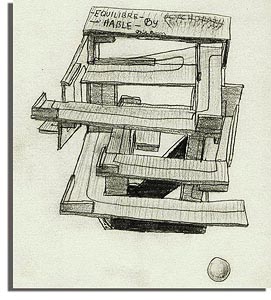
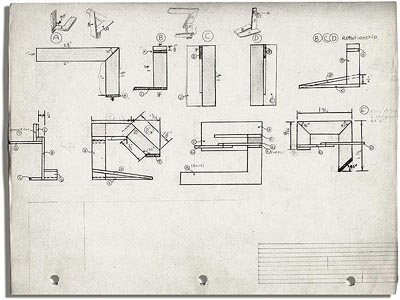
The Thomas Register had hundreds of toy and game manufacturers listed. It was surprising to discover how many small companies made such things. It has always been a struggle for me as to whether I should make the game myself, or have a manufacturer do it. There are risks and rewards in both approaches. To make it myself is financially costly and all-consuming: design, manufacture, advertising, sales, distribution, and things I don’t even know about. What if it fails? But if it succeeds.... On the other hand, toy manufacturers have the distribution network, factories, designers, and all that stuff already in place. They also make most of the money.
The drawing, above left, was done from a refined cardboard model. That model (long lost) was about 10″ across to make re-designing easier. The goal was to clean up the visuals and work with better accuracy. Perhaps it should have a new name, like PSYCHOPATH. Nah. So I crossed it out. The drawing to its right is one I never finished. I was attempting to make a measured plan so that manufacturers had something to go on. I gave up because it fixed the concept into a single design, and one that I didn’t particularly like. I recall from that time the idea of including an LCD clock timer. It was to look like a billboard somewhere in the structure, but considered this philosophically “wrong”. Long before, I removed a sign with the game’s name and my signature from the original balsa model, then modified the end so it couldn’t be cheated. There used to be a little finish box. Now I wish I hadn’t changed it.
One thing the lady at Hasbro did hear from me was that Equilibre Hable was in a cube. She replied, “If it’s a cube game, you can forget it for at least ten years, because Rubik’s Cube has ruined the market.” Oh well.
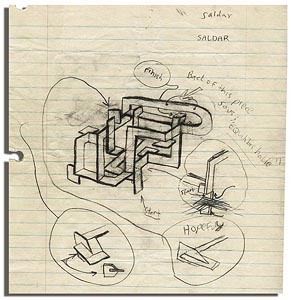
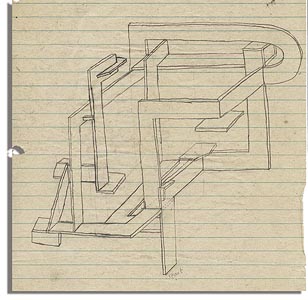
It was time to come up with a completely new design. Remembering how difficult it was for me to make the original balsa model, I tried to work it out entirely in drawing form. My lesson about building physical models to solve problems was not yet learned, so I never built this version physically. The same problem was cropping up in my mind again: Equilibre Hable is not a single design, but rather a concept. This version was called SALDAR, and I don’t remember why.
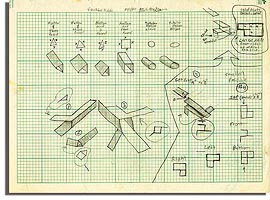
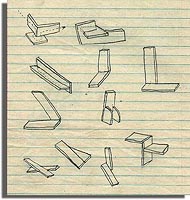
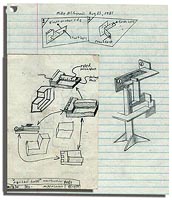
Slowly, the concept of component pieces began to form. What are the essential concepts? I considered the idea of making them from thin metal sheeting. If the design was right, the whole thing could be cut out in a single piece and bent into shape. The left drawing describes basic tubular structures and bends. The middle picture describes basic transitions from one plane into another. To the right, a few tool designs for making multiples in metal, all by hand.
At this point I got extremely busy with college and had little time to focus on the game. Actually, a new feeling was arising. One that took about six years to shake: why would I want to contribute to the plasticization of our planet? I was, and still am very environmentally oriented. My fear was that hundreds of thousands, or perhaps millions of plastic and paper packages would be thrown out in my name. Did plastic come from oil? I wasn’t sure. This discouraging feeling left a hole in my psyche because I knew that some day someone else would come up with the idea. And then it would be too late.